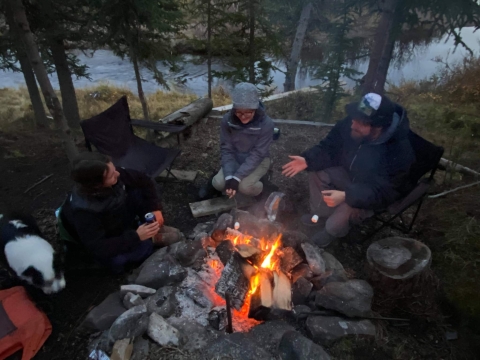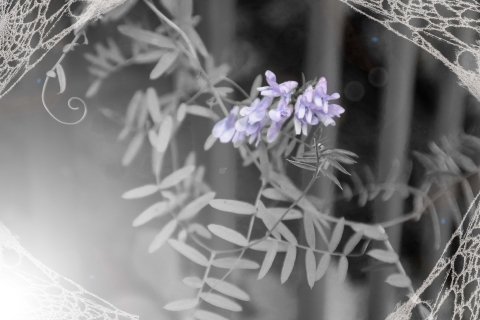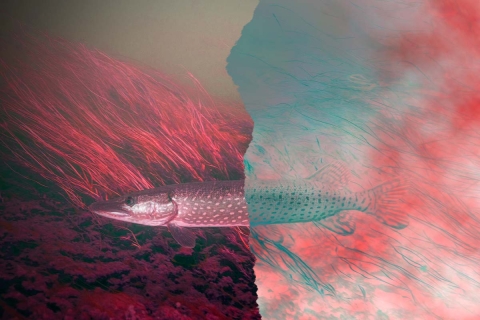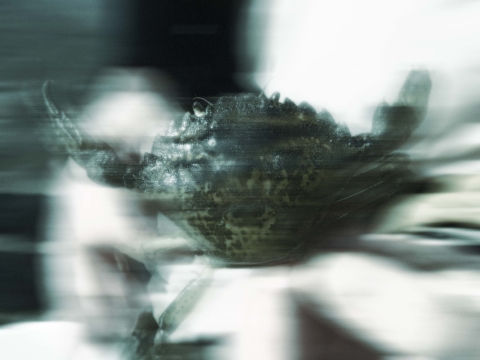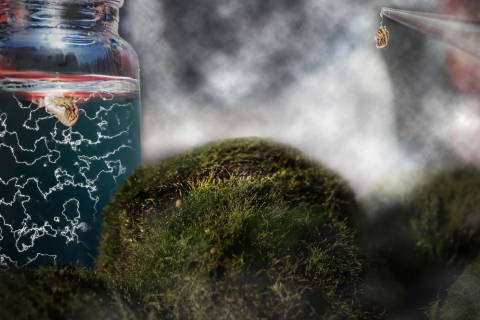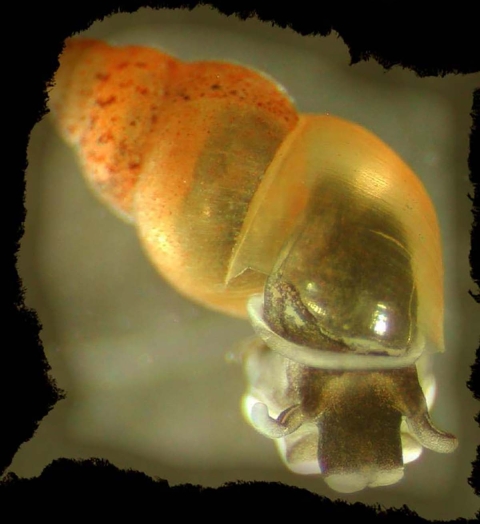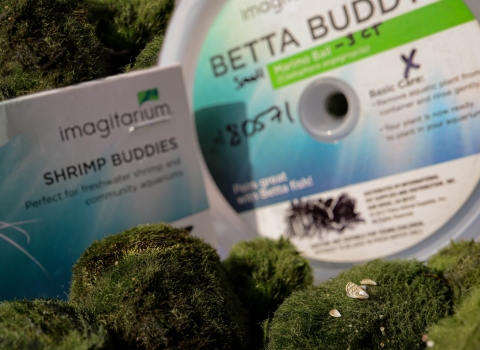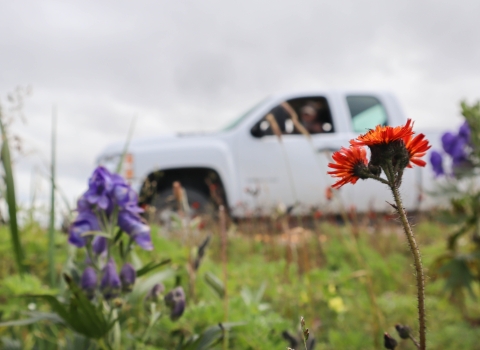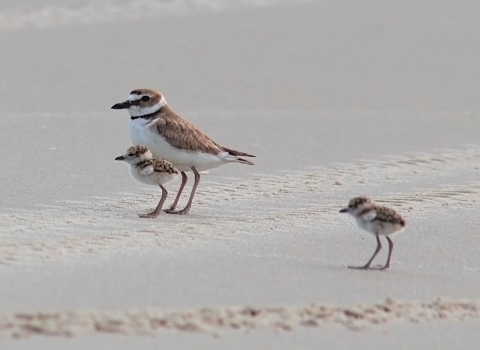Crisp air, pumpkins, and the onset of October are just a few signs that spooky season is upon us. While some may begin to think about zombies and werewolves, consider adding invasive species invasive species
An invasive species is any plant or animal that has spread or been introduced into a new area where they are, or could, cause harm to the environment, economy, or human, animal, or plant health. Their unwelcome presence can destroy ecosystems and cost millions of dollars.
Learn more about invasive species to your monster list. Invasive species are any plant or animal introduced to an area by humans (think aliens and transporter beams) that can damage the lands and waters we care about. This supernatural ability haunts our nightmares. Come join our glowing campfire as we highlight a couple of invasive species that are giving us the creeps.
Let’s start with a few of the ghouls and fiends already present in Alaska. The list includes notorious invasive plants like white sweetclover, bird vetch, orange hawkweed, and Elodea (the only known aquatic invasive plant in Alaska). This pack of minions is present throughout various locations across the state. While an individual plant may seem harmless, their ability to spread gives us reason for concern. For example, white sweetclover alone can produce over 350,000 seeds per plant. Removal of these plants can be as easy as pulling weeds from your garden, but if left to their own devices they will quickly create chaos by taking over the places you love.
Up next we have Northern pike which is our very own Jekyll and Hyde. Seemingly one and the same, how to manage this fish depends on where it’s encountered. North of the Alaska Mountain Range, Northern pike are like Dr. Jekyll, a well-integrated member of the fish community. However, south of the Alaska Mountain Range, people illegally introduced Northern pike and they’ve quickly earned themselves the title of an invasive species. Like Hyde, introduced Northern pike can cause havoc, devouring the locals (like salmon, trout, and burbot). Remember to always check your local fishing regulations before acting on this complicated invasive species.
Descending deeper into the abyss, or in this case, the mudflats, we may find another frightening critter: Orthione griffenis. The parasitic isopod uses Alaska blue mud shrimps as hosts, similar to the creatures in the Alien movies. By attaching underneath the mud shrimps gill flap, this Dracula feeds on mud shrimp blood. The shrimp then slowly becomes a ghost of its former self and eventually dies. In Washington, O. griffenis has already caused the extinction of blue mud shrimp. Now it’s come to play in Alaska, starting with Ketchikan and Sitka.
There are also invasive species hiding in the twilight zone and waiting to sneak in. We know these invasive species are potentially coming because of “horizon scanning”. Sometimes referred to as a decision support tool, horizon scanning is a process used to identify potential invasive species that should be of concern. Like peering into a crystal ball, horizon scanning helps provide a glimpse into the future. Below are some of the species that take form in the glass.
Prowling around the perimeter in the shady woods of nearby Pacific Northwest states, you may find menacing invasive plants like Houndstongue. This invasive plant is aptly named because of its appearance which consists of rosettes of long, rough, hairy, tongue-shaped leaves. Not only does Houndstongue compete with surrounding plants, but it is also poisonous. It’s large, barbed seeds means it can easily attach to the unsuspecting animal or hiker and hitch a ride to new locations.
Creeping up the coast are European green crabs. Invasive green crabs are known for their insatiable appetites which includes other crabs, clams, and oysters. They are very hardy and can tolerate a variety of temperatures and habitats. Slowly and steadily invasive green crabs are moving northwards. In 2022, they were recorded in Alaska for the first time. We can only wish that this boogeyman was a figment of our imagination.
And the list isn’t complete without the PUMPKIN KING! Wait, did we say Pumpkin King? We meant to say the zebra mussel. Just thinking of these small but mighty creatures invokes goosebumps. Zebra mussels are infamous for causing millions of dollars annually in damages to the Great Lakes region. In early 2021, there was a risk of zebra mussel introduction into Alaska’s waters when they snuck into the state hidden in aquarium moss balls. Zebra mussels have not yet been detected in Alaska’s waters and quick action amongst a variety of partners helped manage the risk. Talk about a jump scare.
Other invasive species to be aware of in the future include Brazilian Elodea, Asian clams, and New Zealand mudsnails. We can anticipate that unsuspecting watercraft, contaminated outdoor equipment, the pet trade, and seed mixes may be sources of introduction. Invasive species are resourceful though and may enter Alaska via other means we may not even know of yet. Unlike things that go bump in the dark, invasive species can be introduced at any point in the day or year if the conditions are right.
But don’t worry, the sun does rise and keeps the scary invasive species away. In fact, you can be a beacon of light yourself! You can do your part and prevent the spread of invasive species by cleaning your gear when moving between locations. Just like you wouldn’t want to lead zombies to your hiding place, you wouldn’t want to introduce invasive seeds to your favorite hiking or berry picking spot. If you see or suspect an invasive species in your surroundings, please report them using the Alaska Department of Fish and Game Online Reporter, the Invasive Species Hotline (1–877-INVASIV), or the Alaska Weeds ID app.


